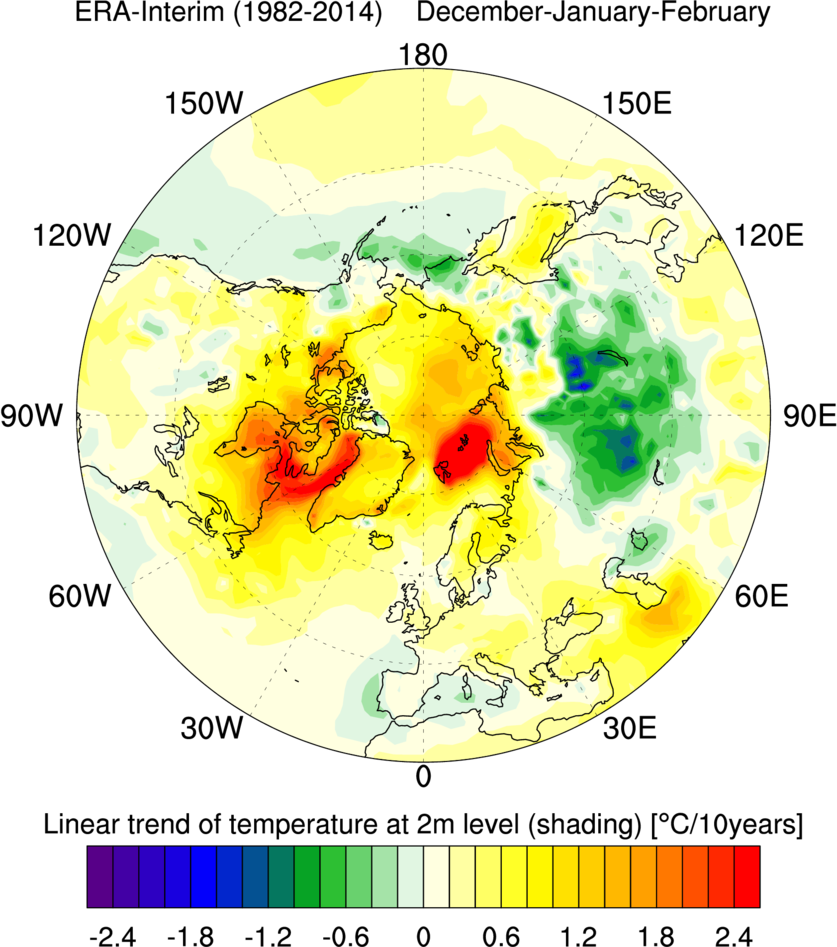The Arctic sea-ice loss and winter temperatures in Eurasia
A long debate of the role of the sea ice and the winter temperatures in Eurasia has got a new contribution. Probably no connection, a new study says.

Hovedinnhold
The Arctic warming and the decline of the polar sea ice, do these phenomena have a connection to the cooling trends of winter in the Eurasia?
In a new publication, a group of researchers at Geophysical Institute and Bjerknes Centre for Climate Research have studied this connection together with collagues in Sweden, Denmark, China, France, Japan and Russia.
In the scientific community it has been a debate on the connection between the role of the Arctic sea-ice loss and climate changes in the Northern Hemisphere. Previous modeling studies have suggested widely different findings.
Observations show a clear warming in the Arctic waters together with loss of sea ice, also in wintertime. But in Siberia in winter, the trend is the opposite. Over a decade the trend is cooling temperatures in the northern parts of Eurasia.
So is there a connection between these two phenomena? Probably not, according to Fumiaki Ogawa, first author in the newly published study.
“The results indicate that the impact of the recent sea-ice decline is rather limited to the high-latitude lower troposphere in winter, and the sea-ice changes do not significantly lead to colder winters over Siberia”, the authors write.
A new look at the controversy
To try to resolve the controversy, Fumiaki Ogawa and collegaues tried a new way to look at it. With coordinated experiments with six atmospheric general circulation models, forced by observed daily sea-ice concentration and sea surface temperatures.
– In our study we used satellite data for sea ice and sea surface temperatures to run some coordinated hindcast experiments with five different atmospheric models, Ogawa says.
To run several models together is called a multi-model approach. The mean of the model ensemble reduces the uncertainties associated with individual model biases and provides the best estimate of the signal of the polar sea ice loss.
The results suggest that the impact of sea ice seems critical for the Arctic surface temperature changes, but the temperature trend elsewhere seems rather due mainly to changes in ocean surface temperatures and atmospheric variability.
Reference:
Ogawa, F., Keenlyside, N., Gao, Y., Koenigk, T., Yang, S., Suo, L. et al (2018). Evaluating impacts of recent Arctic sea‐ice loss on the northern hemisphere winter climate change. Geophysical Research Letters, 45. https://doi.org/10.1002/2017GL076502
This is also publised at the web-pages of The Bjerknes Centre for climate research.

